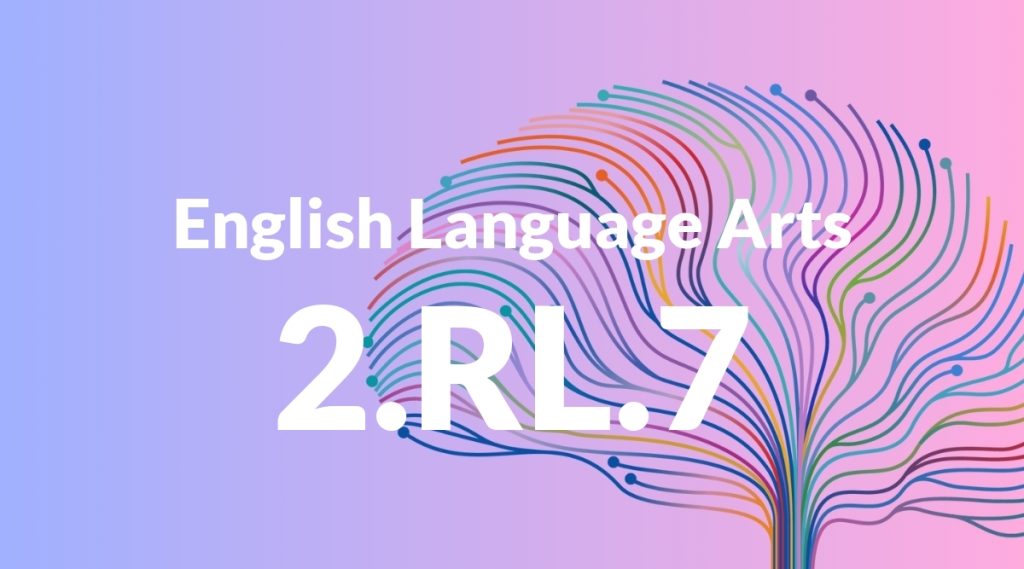Standard: 2.RL.7 – Use information gained from the illustrations and words in a print or digital text to demonstrate understanding of its characters, setting, or plot.
Grade level: Grade 2
Subject: English Language Arts
Domain: Reading: Literature
Teacher Overview
This standard emphasizes the integration of visual and textual information to understand story elements such as characters, setting, and plot. It is crucial in developing students’ ability to comprehend and analyze literature, a foundational skill for higher-level reading and critical thinking. Students should be able to read simple sentences and recognize basic story elements. They should also be comfortable discussing what they see in pictures and how it relates to the story.
Students will move on to more advanced text analysis, where they will infer themes and deeper meanings by integrating information from various sources, including illustrations and text.
Common Misconception 1
Some students may think that illustrations are merely decorative and not essential to understanding the story. This is incorrect because illustrations often provide context, additional details, and emotional cues that enhance comprehension.
Intervention 1
Use picture walks before reading to discuss the illustrations and predict the story. During reading, pause to ask questions about the illustrations and how they relate to the text.
Common Misconception 2
Another common misconception is that the text alone is sufficient for understanding the story. This overlooks the fact that illustrations often provide critical information that text does not explicitly state.
Intervention 2
Incorporate activities where students must use both text and illustrations to answer questions or complete tasks, reinforcing the idea that both elements are important for full comprehension.
Prerequisite Knowledge
Students should have basic reading skills, including the ability to recognize and understand simple words and sentences. They should also be familiar with basic story elements such as characters, setting, and plot.
Subsequent Knowledge
After mastering this standard, students will be able to analyze more complex texts, integrating information from illustrations and text to infer deeper meanings and themes. They will also develop critical thinking skills necessary for understanding and discussing literature.
Instructional Activities
- Picture Walks: Before reading a story, walk through the book’s illustrations and discuss what might happen.
- Story Maps: Create maps that include both text and illustrations to outline the story’s characters, setting, and plot.
- Character Diaries: Have students create diaries for characters using clues from both the text and illustrations.
- Illustration Analysis: Choose a page and analyze how the illustration adds to the text’s meaning.




